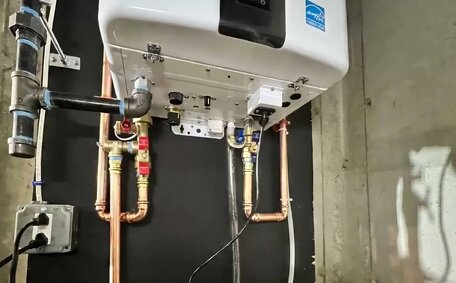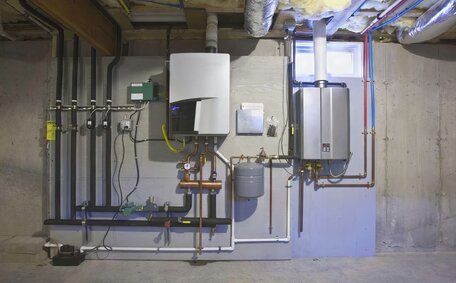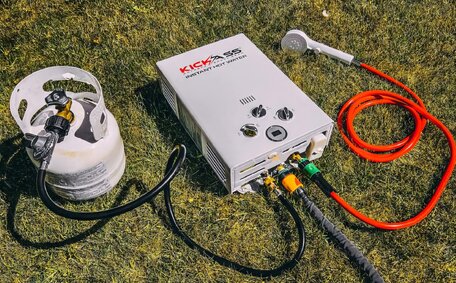Choosing a Safe Location to Store Gas Cylinders
Choose an outdoor area for storing gas cylinders that offers plenty of ventilation, shields the cylinders from harsh weather, and keeps them at least 3 metres away from ignition sources and other stored cylinders, following dangerous goods classifications.
Gas cylinders should be kept outdoors, above ground, and at least 6 metres from any possible ignition sources, in a space with good airflow. To ensure proper storage, position cylinders in areas away from heat sources, flammable liquids, and ensure vehicle cargo areas are well-ventilated.
Install noticeable signs to clearly delineate storage procedures for compressed gas cylinders. Provide ample space to safely maneuver cylinders when opening and closing valves or connecting regulators.
We recommend segregating gases into distinct categories on-site. Storage areas containing different classes of dangerous goods require physical barriers between them.
For compliance with health and safety regulations, confirm that your storage complies with AS 4332 and all pertinent standards. Consider submitting form for review and consult an expert gas engineer to determine if a location suits the gas cylinders your business uses, ensuring secure, compliant storage.
Securing Cylinders Properly to Prevent Toppling
To prevent accidents, ensure gas cylinders are never left unsecured and are always stored in an upright position. Maintaining cylinders in an upright position with valve protection ensures the safety of nearby individuals and preserves the integrity of the cylinders.
Fasten all cylinders, whether full or empty, with restraints like chains, straps, or dedicated gas bottle cages to ensure stability. Employ stands that secure cylinders by the neck and base, to maintain them in a fixed position, irrespective of whether they are full or empty. Ensure restraints are corrosion-resistant and durable enough to support the gas cylinder against impacts.
Barriers help distribute lateral impacts, which cylinders can cause to dissipate forces rather than transmit to neighbouring cylinders.
Regularly inspect restraints as full cylinders can undermine stability and serviceability if not maintained. Inspect for signs of loose fittings, chafed or damaged restraints needing replacement in your cylinders storage. Properly securing gas cylinders in an upright position eliminates the risk of toppling and subsequent accidents, adhering to best practice.
Grouping and Separating Cylinder Types
It’s crucial to group and separate gas cylinders by dangerous goods class to mitigate associated risks. This outlines what should be done to prevent incompatible gases under pressure from interacting and reduces compounding risks.
Maintain a separation distance of at least 3 metres between different gas groups or install physical barriers to ensure safety. Preferences in handling storage include:
- Fuel lp gas like acetylene, the lpg cylinder variety, CNG or hydrogen
- Oxidising gases such as oxygen cylinders, chlorine and nitrous oxide
- Toxic gases such as ammonia, hydrogen sulphide and hydrogen chloride
For every gas category, ensure cylinders are securely upright and individually fastened to avert the risk of them toppling. Routinely check storage conditions and promptly replace any faulty or worn equipment, including restraints.
Any alterations to how gas cylinders must be stored can help comply with AS 4332 and other relevant dangerous goods regulations. When in doubt, consult a licenced gas engineer for safe grouping, separation and storage protocols tailored to your cylinders.
Using Proper Signage for Gas Storage Areas
Clear and visible signage is essential in gas cylinder storage areas. Signs serve to indicate the presence of hazardous goods and provide essential information for the safe handling gas.
Ensure signage in the storage area displays vital information, including:
- Flammable gas cylinders present
- No smoking or ignition sources permitted
- Guidelines for the proper handling storing gas and responding to emergencies
- Relevant safety precautions and PPE requirements
Position signs with both pictograms and text to effectively communicate dangers and safety protocols. Place signs at entrances, access points and at adequate intervals within the storage area so they are highly visible.
Storage areas containing different classes of gases should have clear separation and distinguishable group signs.
Proper signage helps create awareness, minimises mishandling risks and assists emergency services if an incident occurs. Ensure signs are manufactured from non-combustible materials and regularly inspect their legibility.
Handling Cylinders Safely When Moving
When moving gas cylinders, proper manual handling techniques are crucial to prevent injuries and accidents. Consider the following essential steps to ensure a safe gas cabinet handling protocol for gas cylinders:
- Don appropriate personal protective equipment (PPE), such as safety boots, gloves, and eye protection, particularly when accessing cylinder valve outlets.
- Keep gas bottle valves closed when not in use and store cylinders securely to prevent misuse, guaranteeing they’re ready for operation.
- Employ a purpose-designed trolley or hand truck to move cylinders safely and efficiently.
- Secure an individual cylinder to the trolley with chains, straps or clamps. Use cushioning to prevent damage.
- Move only one cylinder at a time. Do not overload trolleys to avoid instability.
- Push rather than pull cylinders trolleys to handle gas cylinders with better manoeuvrability.
- Be vigilant to avoid dropping, tipping, or hitting cylinders, which could lead to valve damage or a dangerous explosion.
When transporting cylinders by vehicle:
- Guarantee sufficient ventilation to avoid sources of ignition, even in vehicles cargo areas.
- Secure cylinders upright using brackets, sleeves or restraints
- Separate from ignition sources, corrosives or oxidisers.
Handling your gas can cylinders incorrectly can cause catastrophic outcomes. Always exercise caution and diligently follow safe procedures.
Ensuring Adequate Ventilation
Proper ventilation is critical in areas where gas cylinders are stored to prevent dangerous gas accumulation, especially when handling the cylinders. While non-flammable, non-toxic compressed gases may be stored indoors, other types should kept outdoors with mechanical ventilation for utmost safety.
Outdoor storage areas open air where gas cylinders are kept must be well ventilated, maintaining natural airflow to dissipate gases that are heavier than air. Use caution when storing cylinders in enclosed spaces like sheds or containers even if equipped with ventilation fans. Monitor gas levels regularly in such areas.
Ventilation openings, per the Australian Standard, should direct any escaping gases away from doors, windows or ignition sources. Exhaust fans should be spark-proof and classified for use in hazardous locations under AS/NZS 60079.10.1. Position fresh air intakes to avoid drawing in any gas leaking from cylinders.
For indoor storage gas usage, ensure adequate air exchange relative to room size and consumption rate. Mechanical ventilation may be necessary depending on properties of flammable gases. Flammable gas detectors connected to alarm systems provide additional protection.
Inadequate ventilation allows hazardous gas concentrations to accumulate, creating grave asphyxiation, toxicity and explosion risks. Proactively maintaining proper ventilation is essential when storing and handling gas cylinders.
Following Applicable Codes and Regulations
When storing gas cylinders, it is crucial to follow all applicable codes and regulations for safety and legal compliance. In Australia, key standards include:
- AS 4332 - The storage and handling gas in cylinders
- AS/NZS 1596 - The storage and handling of storage lpg cylinders
- AS 1940 - The storage flammable and handling of flammable liquids and combustible materials
- AS 3780 - The storage and handling of corrosive substances
- Relevant dangerous goods legislation for your state or territory
These standards offer comprehensive storage handling gas protocols; us know if you require assistance understanding how to store cylinders post risk assessment for location, restraint systems, and segregation needs. They must be adhered to or substantial penalties can apply.
In particular, let us know if AS 4332 should form the basis of any gas cylinder storage arrangements. It outlines stringent safety measures for storage handling, per gas association guidelines, suited to properties of gases such as flammability, toxicity and corrosiveness. Special consideration may be needed for storing gas cylinders in Croydon Park to account for climate impacts.
Do not hesitate to email or call the team at Croydon Park Plumbing if you need guidance applying codes and regulations for safe gas cylinder storage solutions.






